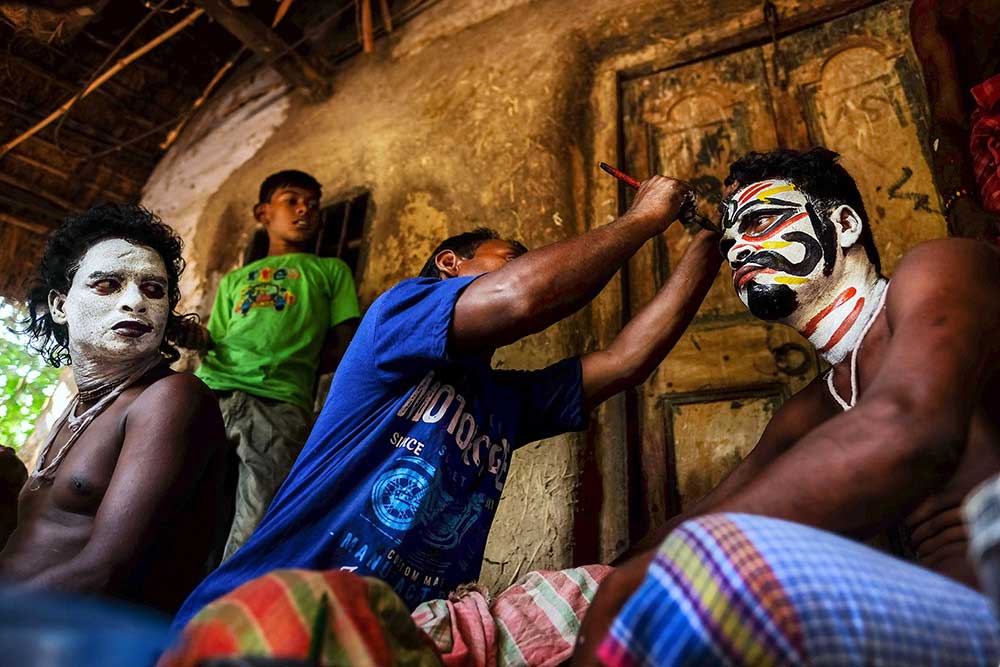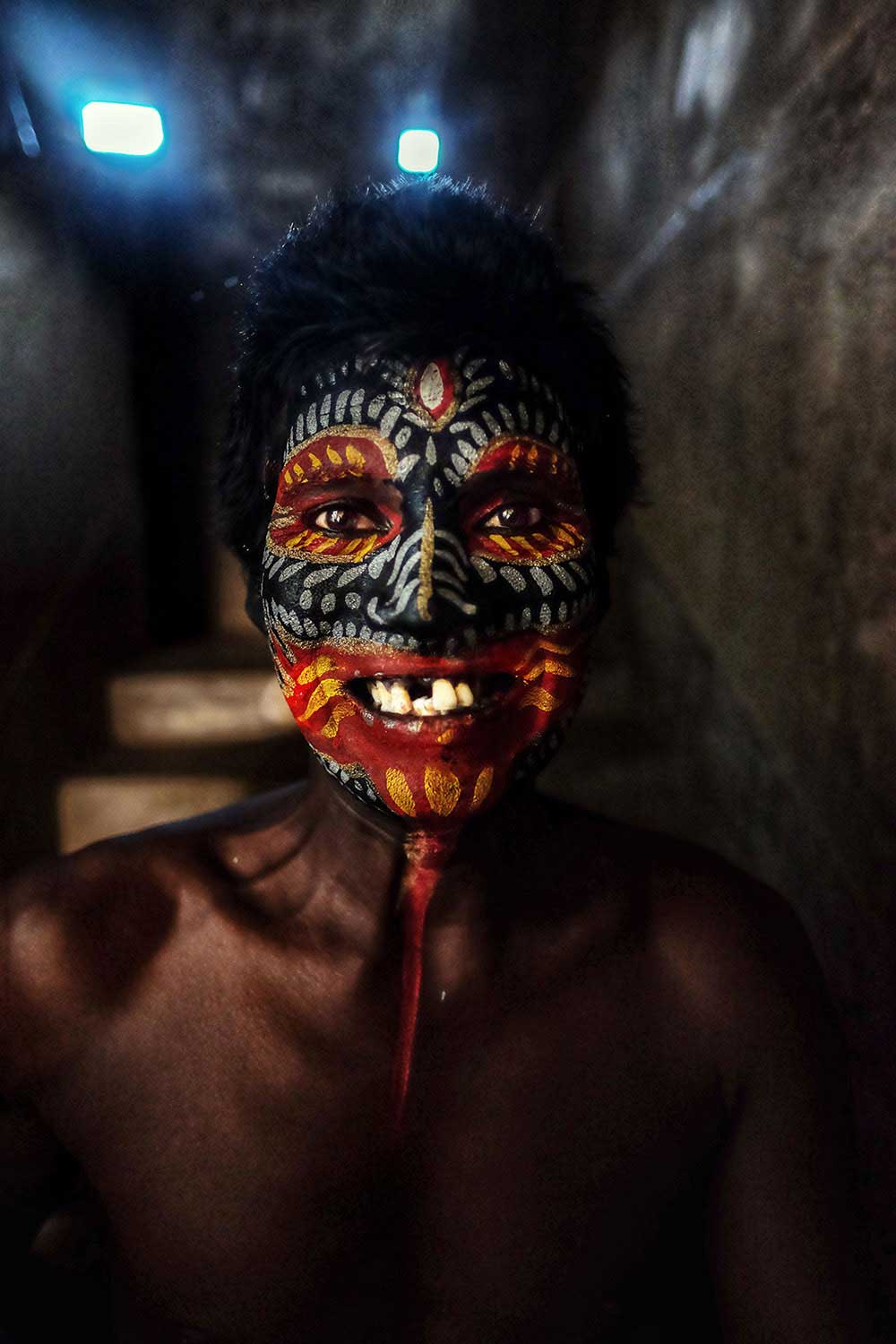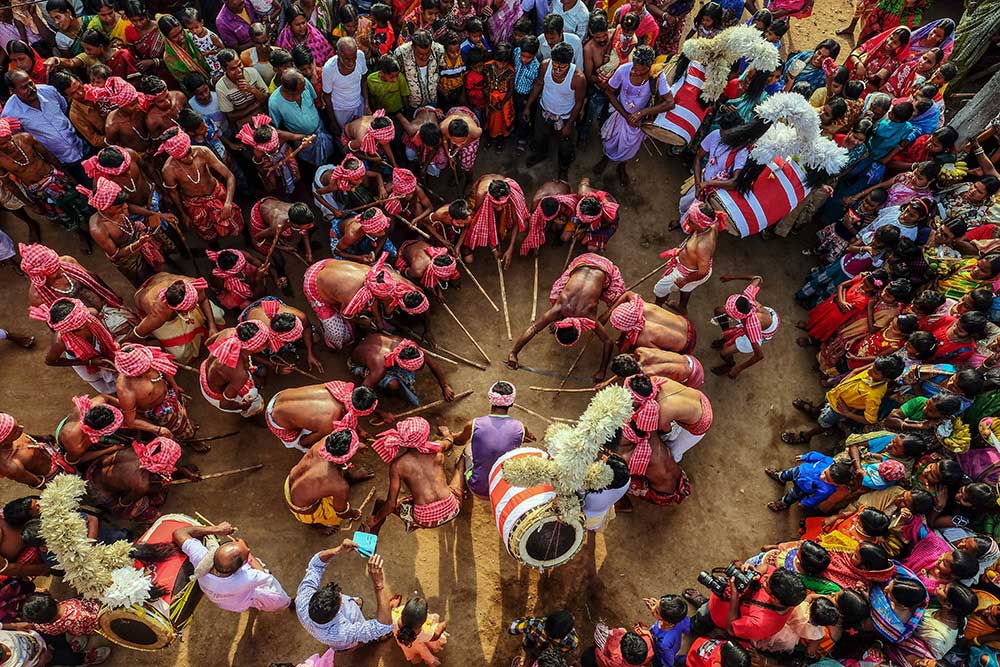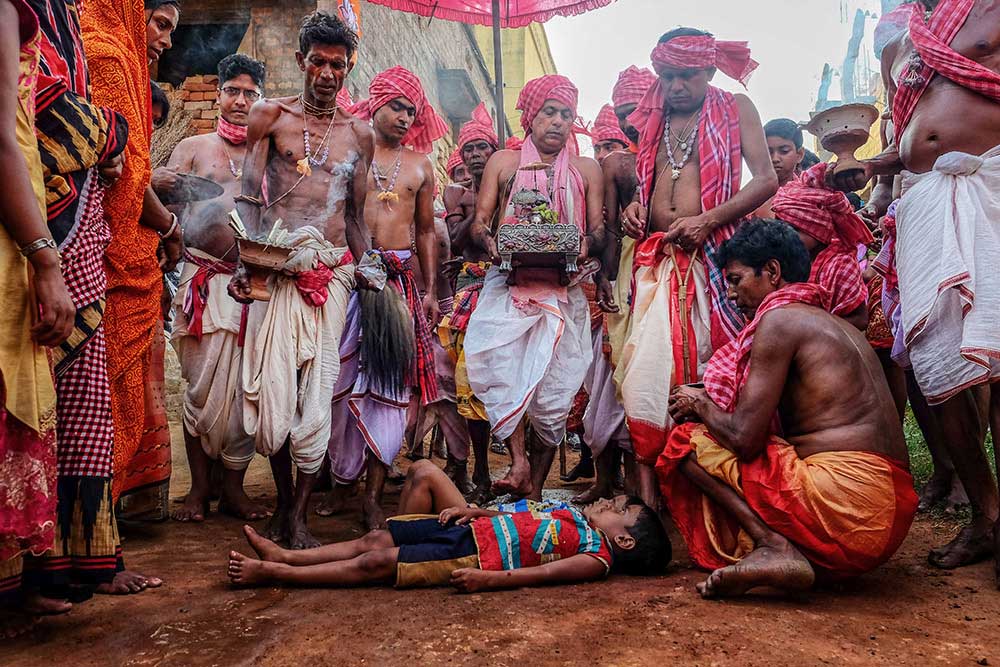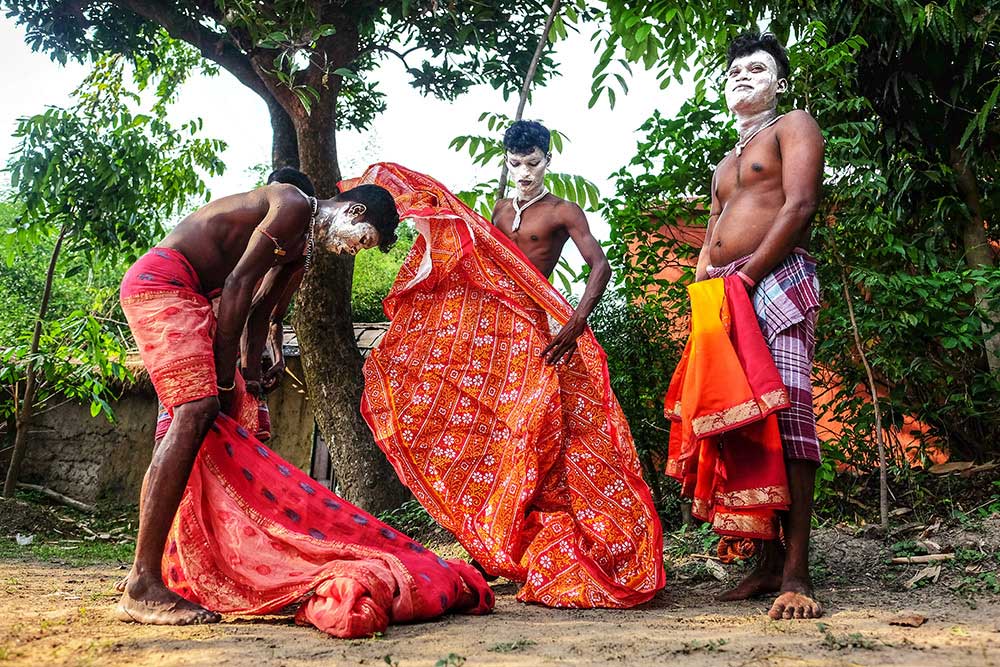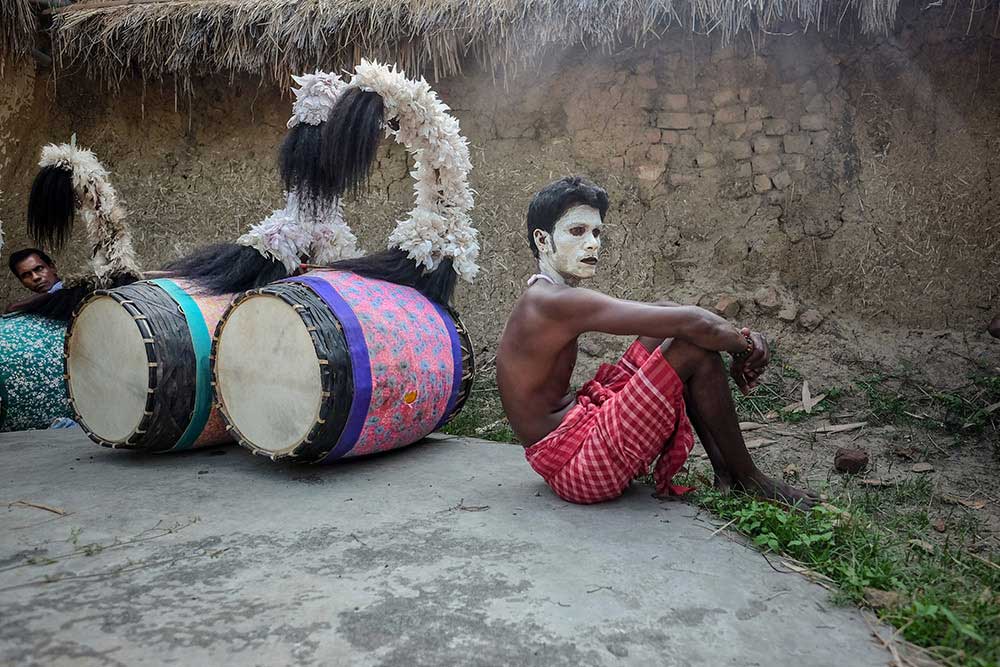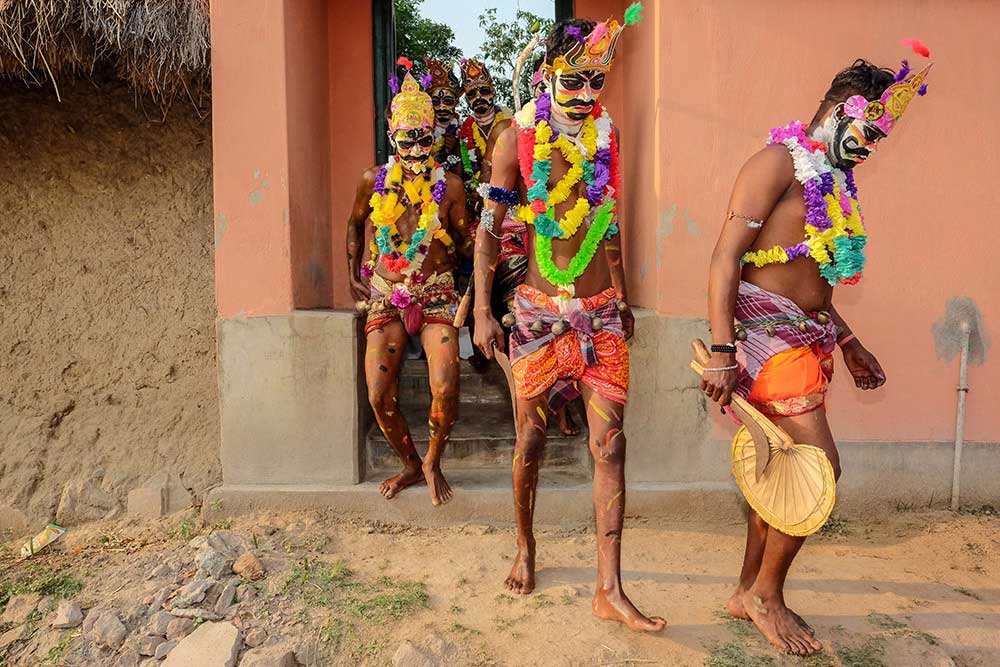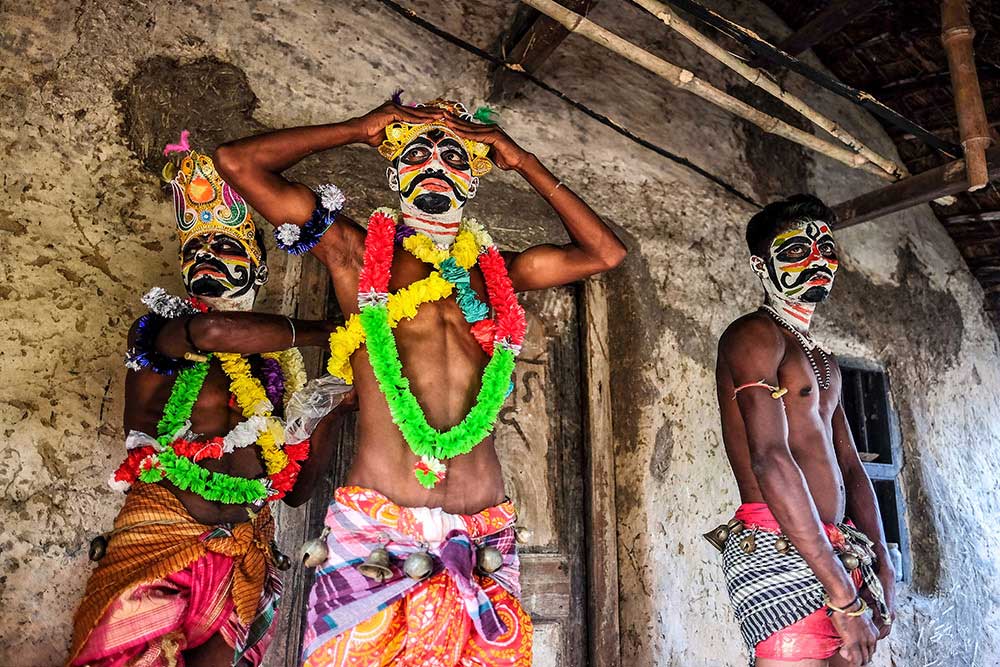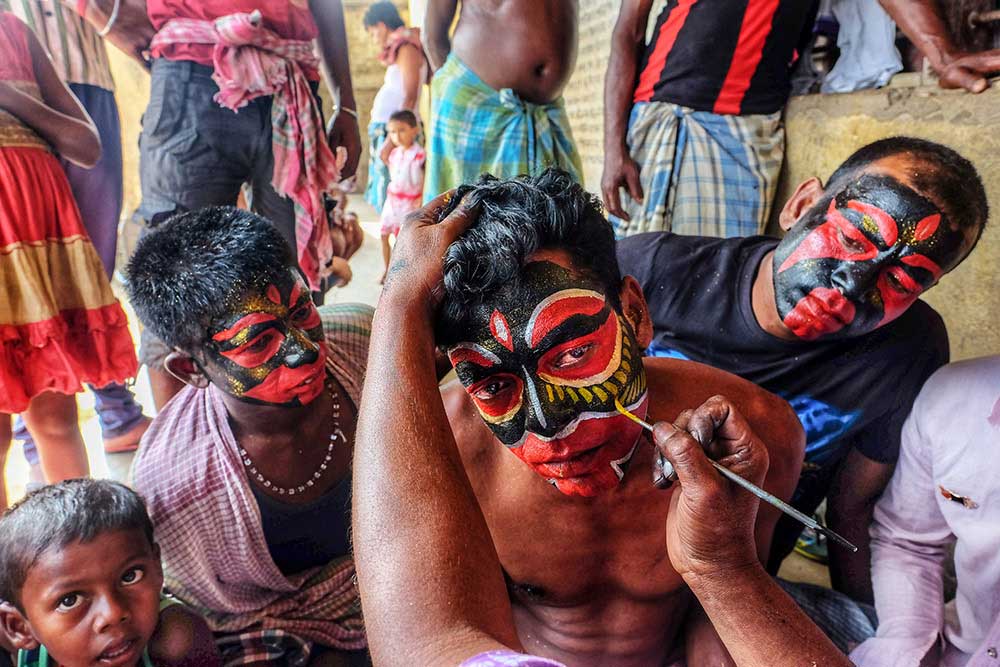Bengal is a culturally diverse State which is known to celebrate various rituals throughout the year. ‘Gajon’ being one such ritual is absolutely worth documenting for its many unique practises, some of which can easily be deemed as primitive in modern times.
The event is celebrated every year among the villages across Burdwan district during the last few days of the Bengali calendar month of Chaitra. Gajon derives its name from ‘Ga’ meaning village and ‘Jon’ meaning folk. Hence it is a folk ritual for the common people. Although the exact theory behind the origin of this ritual is unknown, there are two beliefs that presently exist. Firstly, it is believed that the event was triggered by few Buddhist monks who took shelter in Bengal. They got themselves converted into Brahmins and worshipped ‘Dharmathakur’ an alternate form of Lord Buddha which named the ritual as Dharma Gajon. Secondly, Gajon is considered to be the celebration of the marriage union of Lord Shiva with Harakali. Shiva is worshipped in the form of a Stone Linga where as Harakali symbolises mother nature. Just as the male reproductive organ (Linga) fertilises the female to create a new life their sacred union is considered to be fruitful for the farmers who make a living out of crop harvesting. The rituals are performed by the village folks to appease mother nature to bless them for prosperity. Thus the ritual is alternatively called Shiva Gajon. Coming to the rituals there are an array of them including face and body painting and some of the harsh one’s that include face and body piercing and the fire ritual. There is no gender restriction on the participants undertaking the ritual.
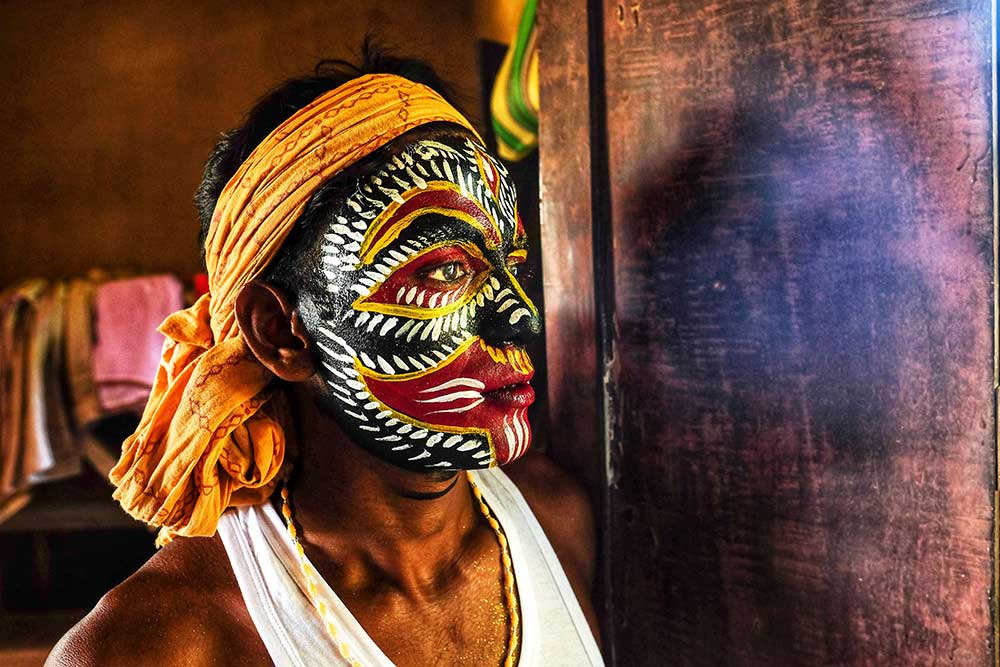
They are commonly known as Bhoktos or Gajon Sanyasis. However, the piercing ritual is mainly executed by the males. They are believed to derive pleasure from the pain through piercing in a non sexual manner to match the pain a woman bears when delivering a baby. One other ritual involves dancing with the carcass of new-born’s and severed heads obtained from nearby burial grounds. These are highly primitive practises and illegal yet they still continue to exist and can be quite a gory sight for the weak hearted. The last day of Chaitra is for Charak Puja. The primary objective is to worship the trunk of the Charak tree which is believed to be the abode of ‘Ardhnariswar’ a deity who is half male and half female. The truck which is obtained from the river bank is around 30 to 40 feet tall with no roots and branches. It is cleaned thoroughly before erecting it placing one end inside a ditch dug on the ground. The top has bamboo sticks with ropes mounted. The devotees generally pierce their backs using needles and then suspend themselves mid air onto the dangling ropes. Some of them are seen to carry infants in their hands while performing this ritual as it is believed to protect them from ill health. Post completion of the ritual the tree trunk is immersed back into the river from where it was obtained. It is believed that the trunk would float back again to the same spot where it was immersed.
